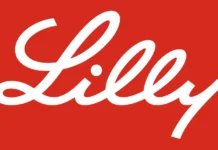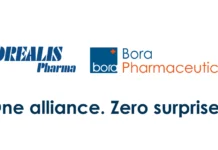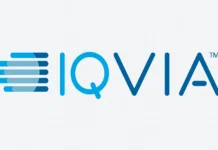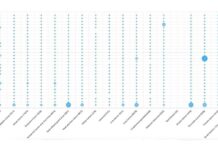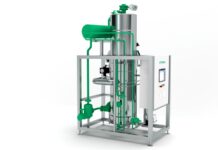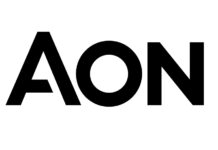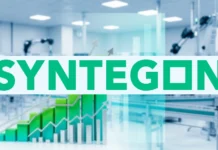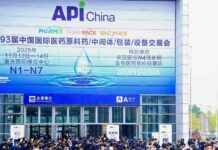Anti-Counterfeit Technologies Strengthening Pharma Security
The pharmaceutical industry faces an unprecedented challenge from counterfeit medications that threaten patient safety, erode brand trust, and result in billions of dollars in annual losses. Anti-counterfeit pharma packaging has emerged as a critical defense mechanism, incorporating sophisticated technologies and security features that protect legitimate products while enabling verification and authentication throughout the supply chain. These innovative solutions represent a comprehensive approach to pharmaceutical security that addresses the evolving tactics of counterfeiters while supporting regulatory compliance and supply chain integrity.
The Global Counterfeit Crisis and Market Response
The anti-counterfeit pharmaceutical packaging market has experienced remarkable growth, projected to expand from USD 127.5 billion in 2025 to USD 279.6 billion by 2035, representing a compound annual growth rate of 8.2 percent. This substantial market expansion reflects the increasing recognition of counterfeiting as a critical threat to public health and pharmaceutical industry sustainability, driving comprehensive investment in protective technologies and security measures.
According to the World Health Organization, approximately 10 percent of medical products in low- and middle-income countries are substandard or falsified, representing a massive public health crisis that affects millions of patients worldwide. These counterfeit products may contain incorrect ingredients, wrong dosages, or dangerous contaminants that can cause serious harm or death, making anti-counterfeit packaging not merely a business protection measure but a critical patient safety imperative.
The economic impact of pharmaceutical counterfeiting extends beyond direct product losses to encompass liability exposure, regulatory penalties, and brand reputation damage that can affect companies for years. The growing sophistication of counterfeiting operations, combined with the expansion of online pharmaceutical sales and complex global supply chains, has created an environment where comprehensive anti-counterfeit strategies have become essential for pharmaceutical manufacturers worldwide.
Serialization and Track-and-Trace Technologies
Mass serialization has emerged as the dominant anti-counterfeit technology in pharmaceutical packaging, commanding a 34 percent market share in 2025. This approach involves assigning unique identifiers to each pharmaceutical unit, enabling item-level tracking from manufacturer to end-user and creating comprehensive audit trails that support authentication and supply chain security.
The implementation of serialization requirements through regulatory mandates such as the U.S. Drug Supply Chain Security Act and the EU Falsified Medicines Directive has accelerated adoption of track-and-trace technologies across global pharmaceutical markets. These regulations require comprehensive serialization of prescription drugs, creating standardized frameworks for product authentication and supply chain monitoring.
Advanced serialization systems integrate with existing enterprise resource planning and warehouse management systems, enabling seamless data exchange that supports real-time tracking and authentication capabilities. These integrated systems can reduce recall execution time by nearly 60 percent while strengthening regulatory audit capabilities and supply chain visibility.
Blockchain integration with serialization systems provides enhanced security and immutability for product tracking data, creating tamper-proof records that support authentication and supply chain integrity. These technologies enable secure data sharing among supply chain partners while maintaining confidentiality and preventing unauthorized access to sensitive information.
Tamper-Evident and Tamper-Proof Solutions
Tamper-evident packaging features have become fundamental components of anti-counterfeit strategies, providing visible indicators of unauthorized access or manipulation that help consumers and healthcare providers identify potentially compromised products. These features range from simple seals and shrink bands to sophisticated multi-layer systems that incorporate multiple security elements.
Advanced tamper-evident technologies include destructible film layers within permanent labels that trigger visible breakage when tampered with, reducing counterfeit-related returns by approximately 32 percent in pilot implementations across North American wholesalers. These innovative materials provide clear evidence of tampering while maintaining ease of use for legitimate consumers.
Tamper-proof closures incorporate sophisticated mechanical systems that prevent unauthorized access while maintaining functionality for intended users. These closures may include multiple locking mechanisms, specialized opening tools, or biometric authentication features that ensure only authorized personnel can access high-value or controlled medications.
Integration of tamper-evident features with digital authentication technologies creates comprehensive security systems that combine physical and electronic protection measures. These hybrid approaches provide multiple layers of security that address different aspects of the counterfeiting threat while supporting various authentication methods for different user types.
Digital Authentication and Smart Packaging Technologies
Radio Frequency Identification technology has gained significant adoption in pharmaceutical anti-counterfeit applications, providing contactless authentication capabilities that support high-speed verification and supply chain tracking. RFID systems can store substantial amounts of data while providing real-time communication capabilities that enable sophisticated authentication and monitoring functions.
Near Field Communication technology offers cost-effective digital authentication solutions that leverage ubiquitous smartphone capabilities for product verification. NFC-enabled packaging allows consumers and healthcare providers to verify product authenticity by simply tapping their smartphones on medication containers, accessing detailed product information and authentication status.
QR codes and data matrix symbols provide accessible digital authentication options that can be read by standard smartphones while linking to secure verification databases. These technologies enable comprehensive product information sharing while supporting authentication processes that don’t require specialized equipment or infrastructure.
Blockchain-enabled authentication systems create immutable records of product provenance and supply chain handling that support comprehensive verification and tracking capabilities. These systems enable secure sharing of authentication data among supply chain partners while maintaining transparency and preventing unauthorized modifications.
Holographic and Optical Security Features
Holographic security elements provide sophisticated visual authentication features that are difficult for counterfeiters to replicate accurately. These optical technologies incorporate complex patterns, color-shifting effects, and three-dimensional imagery that provide immediate visual verification of product authenticity while maintaining aesthetic appeal.
Advanced holographic technologies incorporate custom designs, hidden security features, and proprietary manufacturing processes that create unique authentication elements for specific pharmaceutical brands or products. These customized features provide enhanced security while supporting brand identity and marketing objectives.
Security inks and coatings provide additional authentication layers that may incorporate color-changing properties, fluorescent characteristics, or other special effects that are visible under specific lighting conditions. These materials can be integrated into existing printing processes while providing sophisticated authentication capabilities.
Micro-printing and micro-text features provide authentication elements that are visible under magnification but difficult to reproduce accurately using standard printing equipment. These features can be integrated into existing label designs while providing verification capabilities for trained personnel or specialized equipment.
Regulatory Compliance and International Standards
The regulatory landscape for anti-counterfeit pharmaceutical packaging continues to evolve, with authorities worldwide implementing comprehensive requirements that address serialization, authentication, and supply chain security. These regulatory frameworks create standardized approaches to anti-counterfeit protection while ensuring compatibility across international markets.
The U.S. Drug Supply Chain Security Act represents one of the most comprehensive anti-counterfeit regulatory frameworks, requiring unit-level serialization and interoperable data exchange among supply chain partners. Full implementation of DSCSA requirements has created a robust foundation for pharmaceutical authentication and tracking throughout the American market.
The European Union’s Falsified Medicines Directive mandates unique identification codes and tamper-evident features for prescription medications throughout EU markets. This regulation has established harmonized standards for anti-counterfeit protection while enabling interoperability among European healthcare systems and supply chain partners.
International harmonization efforts seek to create compatible anti-counterfeit standards that facilitate global pharmaceutical trade while maintaining security and authentication capabilities. These initiatives involve collaboration among regulatory authorities, industry organizations, and technology providers to develop standardized approaches that address diverse market requirements.
Supply Chain Integration and Verification Systems
Comprehensive anti-counterfeit strategies require integration throughout pharmaceutical supply chains, from manufacturing facilities to retail pharmacies and healthcare providers. This integration enables end-to-end verification capabilities that support authentication at every point where products change hands or are dispensed to patients.
Manufacturing integration involves incorporating anti-counterfeit features into production processes while maintaining efficiency and quality standards. These integration efforts may require specialized equipment, modified workflows, and enhanced quality control procedures that ensure consistent application of security features.
Distribution network verification systems enable real-time authentication and tracking throughout wholesale and retail channels. These systems provide immediate feedback about product authenticity while supporting rapid response to suspected counterfeiting activities or supply chain anomalies.
Healthcare provider verification capabilities enable authentication at the point of dispensing or administration, providing final confirmation of product legitimacy before medications reach patients. These systems may integrate with electronic health records and pharmacy management systems to create comprehensive medication safety networks.
Economic Analysis and Investment Justification
The implementation of comprehensive anti-counterfeit packaging systems requires significant investment in technology, infrastructure, and operational modifications, but provides substantial return on investment through reduced counterfeiting losses, enhanced brand protection, and improved regulatory compliance capabilities.
Cost-benefit analysis typically demonstrates positive return on investment within two to three years of implementation, with ongoing benefits including reduced product diversion, enhanced brand reputation, and improved customer confidence. These benefits often exceed initial implementation costs while providing long-term competitive advantages.
Risk mitigation benefits include reduced liability exposure from counterfeit products, decreased regulatory penalties, and improved insurance coverage that collectively provide substantial value beyond direct cost savings. These risk reduction benefits are particularly important for companies operating in high-risk markets or therapeutic areas.
Market access benefits include enhanced ability to enter new markets, improved relationships with regulatory authorities, and increased customer confidence that support business growth and expansion opportunities. These strategic benefits contribute to long-term business value and competitive positioning.
Emerging Technologies and Future Innovations
The future of anti-counterfeit pharmaceutical packaging will be shaped by continued advances in digital technologies, materials science, and authentication methods that provide increasingly sophisticated protection against evolving counterfeiting threats. Artificial intelligence and machine learning will enable more sophisticated authentication algorithms and pattern recognition capabilities.
DNA-based authentication technologies offer the potential for molecular-level security features that would be virtually impossible for counterfeiters to replicate. These technologies incorporate unique biological markers that can be verified through specialized testing procedures while providing ultimate authentication security.
Advanced materials science will enable new security features including self-destructing labels, temperature-sensitive indicators, and smart materials that respond to environmental conditions or tampering attempts. These materials will provide passive security features that don’t require active verification processes.
Integration with Internet of Things technologies will enable real-time monitoring and authentication capabilities that provide continuous verification throughout the supply chain. These connected systems will support proactive security management while enabling rapid response to authentication failures or security breaches.
Global Implementation Strategies and Best Practices
Successful implementation of anti-counterfeit pharmaceutical packaging requires comprehensive strategies that address diverse market requirements, regulatory frameworks, and supply chain characteristics. These strategies must balance security effectiveness with operational efficiency while maintaining cost-effectiveness and user accessibility.
Regional adaptation strategies address varying regulatory requirements, market conditions, and counterfeiting threats across different geographic markets. These strategies may incorporate region-specific security features while maintaining global compatibility and standardization where possible.
Stakeholder engagement involves collaboration with supply chain partners, regulatory authorities, healthcare providers, and patient advocates to ensure that anti-counterfeit measures support all stakeholders while maintaining effectiveness against counterfeiting threats.
Continuous improvement processes incorporate feedback from implementation experience, emerging threat intelligence, and technological advances to enhance anti-counterfeit strategies over time. These processes ensure that security measures remain effective against evolving counterfeiting tactics while adapting to changing market conditions.
Conclusion: Building Comprehensive Pharmaceutical Security
Anti-counterfeit technologies in pharmaceutical packaging represent essential components of comprehensive security strategies that protect patients, preserve brand integrity, and support sustainable pharmaceutical industry growth. As counterfeiting threats continue to evolve in sophistication and scale, pharmaceutical companies must implement multi-layered security approaches that combine physical and digital protection measures with comprehensive supply chain integration and verification capabilities.
The successful implementation of anti-counterfeit packaging requires ongoing commitment to innovation, collaboration among industry stakeholders, and adaptation to changing threat landscapes and regulatory requirements. Through comprehensive anti-counterfeit strategies, the pharmaceutical industry can maintain public trust while ensuring that legitimate medications reach patients safely and effectively, supporting the fundamental mission of healthcare improvement and patient safety worldwide.



